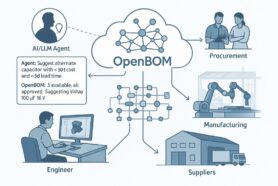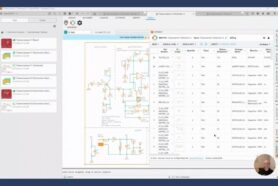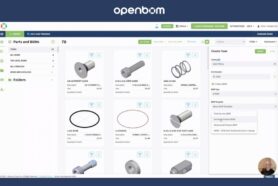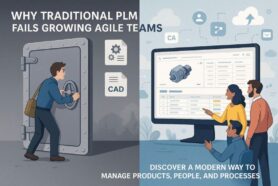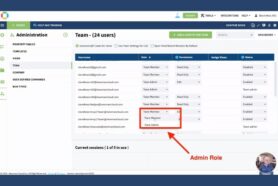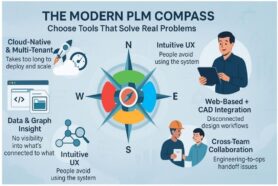
Data is a new oil of the modern digital environment. Therefore the way companies can manage information about their products and processes is critical for company success. That was the mantra of PLM and how it was defined 20-30 years ago when visionaries of engineering and manufacturing computer systems extended the principles of computer-aided design and manufacturing to support complex processes to develop highly configurable products.
But we are moving forward. The trends toward connectivity and connected products and what was called the “Internet of Things” pushed companies to the next level of connectivity. What is even more important is the switch towards selling services and not products. Think about selling “miles” instead of tiers, selling “hours of construction work” instead of selling construction equipment, and “hours of power generation” instead of buying turbines. The transformation is everywhere. You might think it applies only to large companies and you would be wrong. Think about the “service approach” everywhere. Think about companies selling “service to monitor the quality of agriculture” instead of selling drones spreading chemicals, “services to charge electrical vehicles” instead of selling chargers, etc.
I recommend you check out a very visionary article written by Michael E. Porter and James E. Heppelmann – “How Smart, Connected Products Are Transforming Competition“. In this seminal article, you can learn about the profound impact of information technology on product design, functionality, and competition. Traditional products, once composed solely of mechanical and electrical parts, have evolved into complex systems combining hardware, sensors, data storage, microprocessors, software, and connectivity. This evolution, driven by advances in processing power, miniaturization, and wireless connectivity, has revolutionized how products operate and interact with their environment, giving rise to “smart, connected products.”
These smart, connected products offer unprecedented opportunities for enhanced functionality, reliability, and efficiency, transcending traditional product boundaries and significantly altering value chains. Companies are compelled to rethink and revamp their internal processes to leverage these new capabilities, leading to a shift in how they create and capture value. As a result, industry structures are being reshaped, and companies face new competitive dynamics, including the need to redefine their strategic positioning and business models.
Porter and Heppelmann argue that smart, connected products fundamentally transform the nature of competition by introducing new strategic choices and operational implications. Companies must navigate this landscape by understanding the broader implications of these technologies, which extend beyond the products themselves to encompass new data management practices, customer relationships, and industry boundaries. This shift leads to the third wave of IT-driven competition, characterized by the integration of IT directly into products, thereby driving significant improvements in product functionality and performance, reshaping value chains, and creating new opportunities for competitive advantage.
At OpenBOM, we work with many innovative companies that are looking at how to organize their information to support processes in such a complex and connected world. The ugly truth behind all conversations about connected products is that you have somewhere a bunch of Excel spreadsheets, filled manually by people trying to organize information about engineering structures, purchase orders, suppliers, components, etc. Even if a company decides to use existing PLM software from mindshare PLM leaders, the product database is limited to a single company, and connectivity with others is supported by export/import Excels.
It brings up a question about what information and product lifecycle management infrastructure is needed to support the future of smart and connected products. And this is what we do at OpenBOM.
OpenBOM xBOM Architecture: Foundation for Distributed Data
OpenBOM’s multi-view xBOM architecture lays the groundwork for a distributed data environment that extends beyond the boundaries of a single company. Unlike traditional EBOM (Engineering Bill of Materials) and MBOM (Manufacturing Bill of Materials), which are typically confined to one organization, OpenBOM’s architecture enables the management of BOMs across multiple entities. For example, an EBOM might be managed by the original manufacturer, an MBOM by a contractor, and a customer’s as-maintained BOM by a service provider. This distributed data architecture, though seemingly futuristic, mirrors current practices where companies exchange large volumes of spreadsheets to manage BOMs across organizational boundaries.
The xBOM architecture facilitates seamless data sharing and collaboration by providing a mechanism to define a distributed digital thread of information. This is achieved through a multi-tenant environment that segments data structures while connecting them through a global product knowledge graph. This approach ensures that all stakeholders have access to the most up-to-date and accurate information, enhancing traceability, reducing errors, and improving overall efficiency.
OpenBOM xBOM Architecture: Enabling a Distributed Digital Thread
OpenBOM’s xBOM architecture is designed to support a distributed digital thread of information, essential for managing complex product life cycles in a multi-company environment. By segmenting data structures within a multi-tenant environment and connecting them via a global product knowledge graph, OpenBOM enables seamless integration and collaboration across different organizations. This architecture allows companies to maintain their data autonomy while ensuring interoperability and data consistency across the entire product lifecycle.
The distributed digital thread facilitated by OpenBOM provides several advantages. It enhances data accuracy and reduces the risk of errors by eliminating the need for manual data entry and spreadsheet exchanges. It also improves traceability, allowing stakeholders to track changes and updates throughout the product life cycle. Moreover, it supports real-time collaboration, enabling teams to work together more efficiently and make informed decisions based on the latest data.
Conclusion
The vision of smart, connected products demands a new architecture of data management and PLM systems that supports the integration and control of distributed data across multiple organizations. OpenBOM provides a modern platform that addresses this need, offering a scalable, cloud-native solution that goes beyond the limitations of traditional PLM databases. By leveraging OpenBOM’s xBOM architecture, companies can effectively manage complex product life cycles, enhance collaboration, and drive innovation in a rapidly evolving competitive landscape.
REGISTER FOR FREE and check how OpenBOM can help you organize your product information to share it between engineers, production contractors, and maintenance services.
Best, Oleg
Join our newsletter to receive a weekly portion of news, articles, and tips about OpenBOM and our community.





